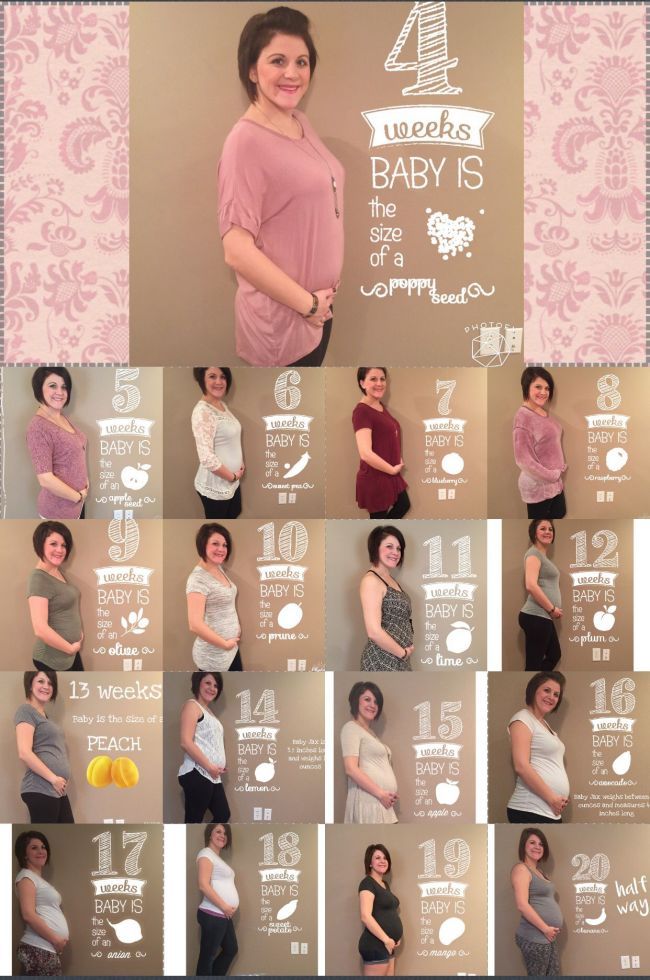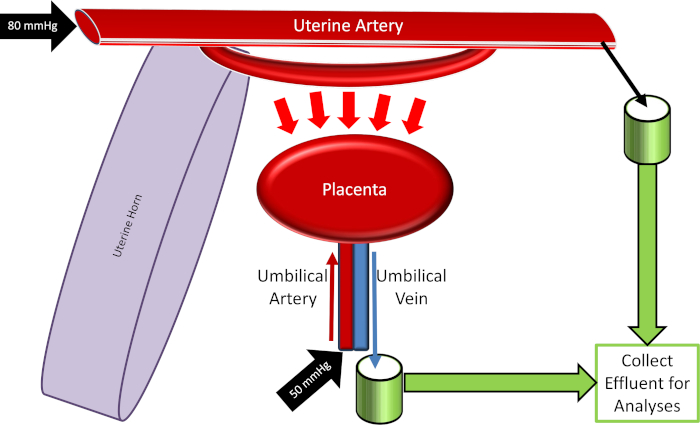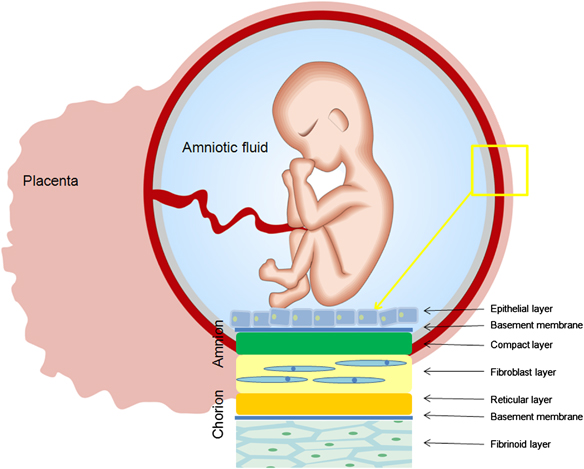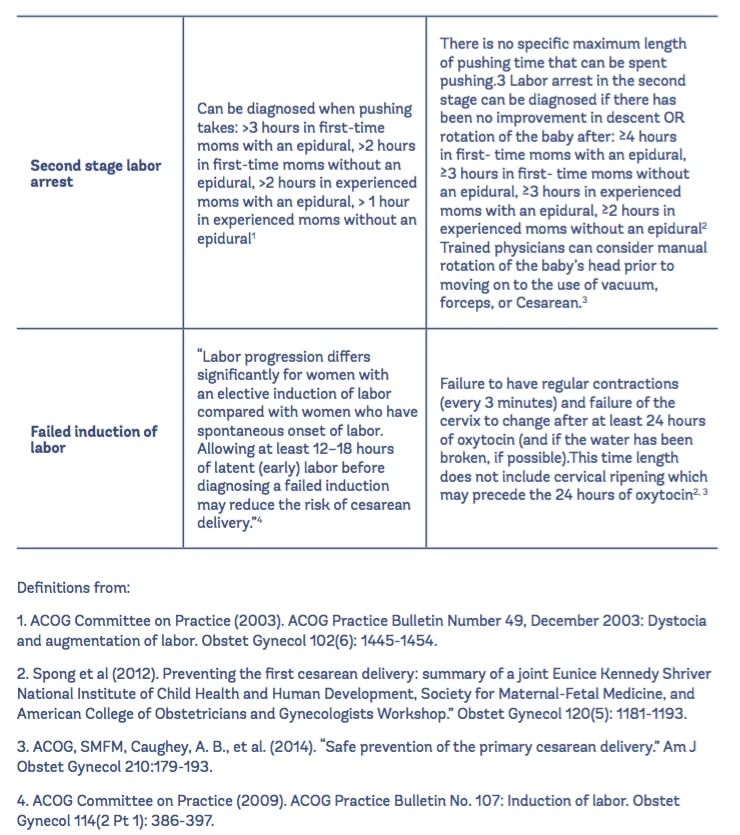Pregnancy each week
Pregnancy Week-by-Week
Hello baby bump! In the second trimester, you’ll really start to show. Learn what’s normal--or not--with pregnancy weight gain by week, and what’s happening in your pregnancy week-by-week.
14 Weeks Pregnant
Welcome to the second trimester! 14 weeks pregnant marks a lot of changes—you might be feeling less nauseated, hungrier and more energetic. That’s because you’re embarking on what’s known as the “honeymoon phase” of pregnancy. Starting with pregnancy week 14, the second trimester is the time to get some exercise, get some to-do’s done and have some fun. Enjoy!
15 Weeks Pregnant
Feeling sexy? Now that you’re 15 weeks pregnant, you’re probably feeling high energy, and that may mean high libido, too. Your partner isn’t feeling nearly as frisky at week 15 pregnancy? That’s normal, too. Let’s face it, the thought of baby being so close while you two are doing the deed can freak them out. Remind your partner that baby has no idea what’s going on and—as long as your OB hasn’t given you any activity restrictions—sex won’t hurt baby or threaten your pregnancy.
16 Weeks Pregnant
Now that you’re 16 weeks pregnant, things are getting pretty exciting. You may have another prenatal visit this week, where you will get to hear baby’s heartbeat again. Even more thrilling will be feeling baby kick, which could happen starting this week, so pay attention to those subtle feelings in your 16 weeks pregnant belly. Another cool fact? Baby is starting to be able to hear your voice—and they’ll recognize it at birth—so feel free to chat baby up any chance you get.
17 Weeks Pregnant
Decisions, decisions. Now that you’re 17 weeks pregnant, start making firm plans, like whether or not you’re going to find out baby’s sex via ultrasound (if you didn’t already through first trimester prenatal testing), and what kind of childbirth class you’d like to take. As you start making these decisions, the pregnancy will feel even more real, which is super exciting, but part of you is probably feeling a little anxious, too. After all, you’re at week 17 of your pregnancy; that’s almost halfway through, and there’s so much to do, it can be overwhelming. Our best advice? Don’t try to do it all yourself—ask for help. And whatever doesn’t get done? You’ll find it’s not that important anyhow.
Our best advice? Don’t try to do it all yourself—ask for help. And whatever doesn’t get done? You’ll find it’s not that important anyhow.
18 Weeks Pregnant
Time to switch things up. Starting around 18 weeks pregnant, you should begin to sleep on your side instead of your back. That’s because baby (and your uterus) is getting big enough to press against large veins in the back of your abdomen, which can reduce the amount of blood going to your heart, making you feel lightheaded—or worse, lowering your blood pressure. Sounds scary, but it’s totally preventable by simply sleeping on your side. Of course, your veins aren’t the only things that are prone to pressure—you are, too! At pregnancy week 18, there’s a lot going on. Be sure, in your hectic schedule, that you plan some time to take breaks and unwind.
19 Weeks Pregnant
So what do you think: Is it a boy or a girl? At 19 weeks pregnant, you’re probably getting psyched for your mid-pregnancy ultrasound. Most parents-to-be think of this test as the chance to find out baby’s sex (if you didn’t already in the first trimester through prenatal testing), but you will actually see a lot more than baby’s boy or girl parts.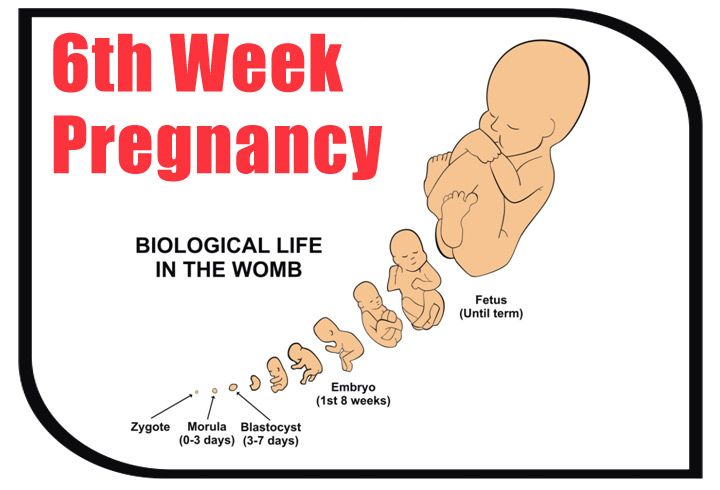 You’ll see all of baby’s body—inside and out—and you’ll be amazed at all the development going on at week 19 of pregnancy. That’s exciting!
You’ll see all of baby’s body—inside and out—and you’ll be amazed at all the development going on at week 19 of pregnancy. That’s exciting!
ADVERTISEMENT
20 Weeks Pregnant
Congrats! During week 20 of pregnancy, you’re at the halfway point. If you’ve recently found out baby’s sex, you’re in a completely new mindset—are we right? Now, those baby names you’re throwing out are more likely to end up as baby’s actual name. When you find yourself in a baby store, you can start to picture those adorable outfits on your little boy or girl—so 20 weeks pregnant may be the time when you’re ready to start finalizing your baby registry too. Happy shopping!
21 Weeks Pregnant
Pressure’s on! Have you found the perfect baby name yet? It seems like parents-to-be either come up with baby’s name quickly and easily, or agonize over it all the way up until the birth. If you haven’t picked that perfect name yet, check out The Bump’s extensive lists of baby names of all sorts; cool names, beautiful names, hipster names and much more. Whatever name you choose, you’ll probably think it’s even more perfect once you get to know (and fall in love with) your future little bundle of joy. At 21 weeks pregnant, you’re not just choosing a name, you’re hard at work getting your home ready too. Of course, things like baby bouncers and changing table pads can be tough to choose, but try not to stress about it at week 21 of pregnancy. Trust us, baby won’t care if you pick out a Pack ‘n Play that clashes with the area rug!
Whatever name you choose, you’ll probably think it’s even more perfect once you get to know (and fall in love with) your future little bundle of joy. At 21 weeks pregnant, you’re not just choosing a name, you’re hard at work getting your home ready too. Of course, things like baby bouncers and changing table pads can be tough to choose, but try not to stress about it at week 21 of pregnancy. Trust us, baby won’t care if you pick out a Pack ‘n Play that clashes with the area rug!
22 Weeks Pregnant
It’s getting crowded in there! Now that you’re 22 weeks pregnant, your rapidly growing baby is invading your space—to say the least. That’s why it might be tough to catch your breath and why your back might be killing you. Hey, as baby grows, they may be expanding your belly so much (so fast) at week 22 of pregnancy that you might start to get some stretch marks (sorry)—and you might even have a newfound “outie” belly button! While you might not love all these side effects, you’ll probably want to capture your pregnant belly in some professional photos.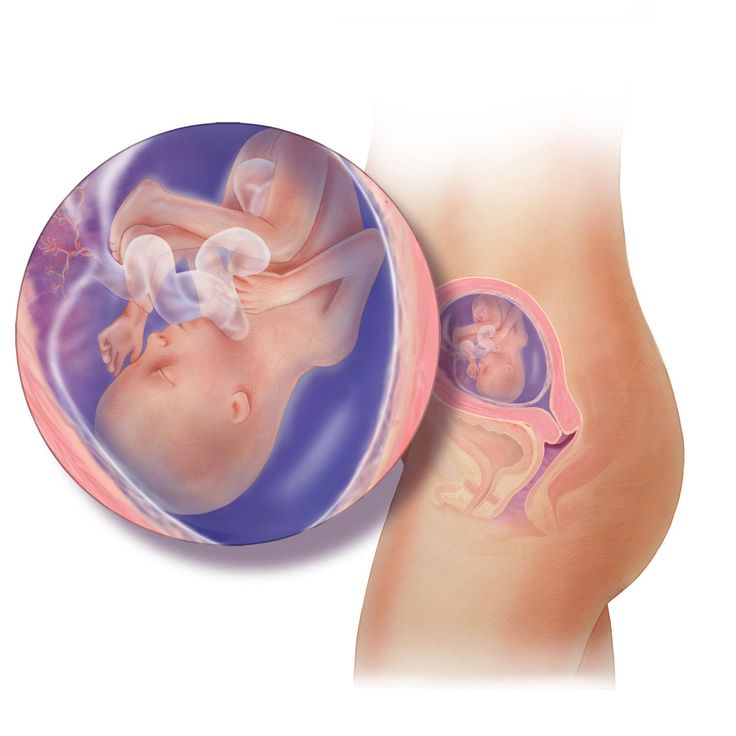 Twenty-two weeks is a good time to start planning for a maternity portrait session. You’ll want to aim for a third trimester sesh to capture that big, beautiful belly, but it shouldn’t be so late that you risk going into labor before your appointment.
Twenty-two weeks is a good time to start planning for a maternity portrait session. You’ll want to aim for a third trimester sesh to capture that big, beautiful belly, but it shouldn’t be so late that you risk going into labor before your appointment.
23 Weeks Pregnant
At 23 weeks pregnant, baby is getting ready for their big debut by listening in on what’s going on in the outside world. We know you’re getting ready too. Just remember: While having the nursery painted and stocked with diapers is important, there are some less fun to-dos you should have on your radar—namely, financials. Week 23 of pregnancy is a good time to call your health insurance company to see how you’re currently covered and decide what adjustments you’ll need to make for baby. Consider writing a will if you don’t have one, or updating your current one. And how’s baby’s savings account going? If you’re like, “what savings account?” now is a good time to start one. Even making small deposits will help once you factor in the time value of money—the earlier you start saving, the faster your money will compound.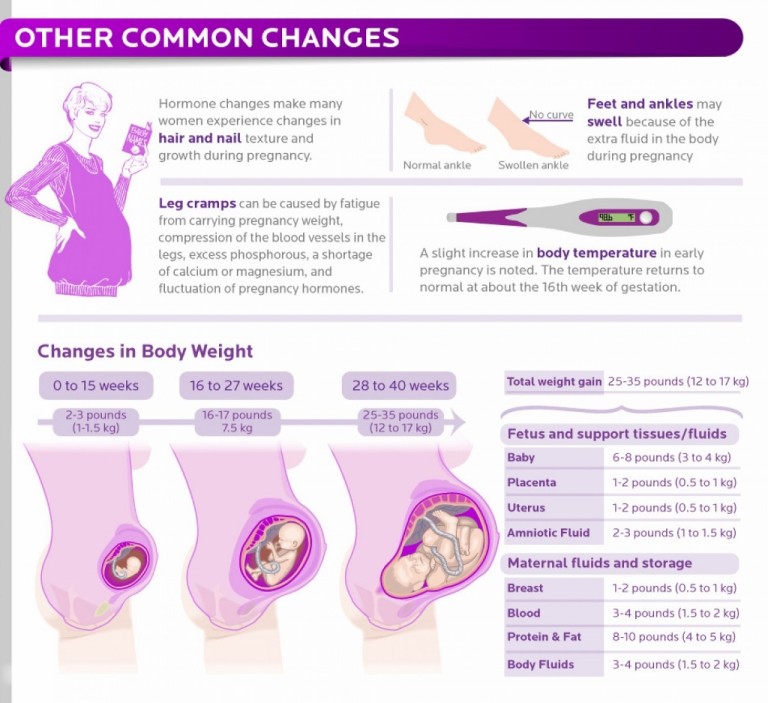 One study found that kids who have their own savings account are more likely to go to college, and another one estimated the average cost of raising a baby until age 18 to be over $226,000. Whoa!
One study found that kids who have their own savings account are more likely to go to college, and another one estimated the average cost of raising a baby until age 18 to be over $226,000. Whoa!
24 Weeks Pregnant
Consider this a preview of motherhood: Baby is doing just fine—and you’re, well, kind of a mess. Your week 24 baby is working on being ready to survive (and thrive!) in the outside world. You, on the other hand, are probably experiencing some of the late-pregnancy discomforts at 24 weeks pregnant—leg cramps, backaches and swollen feet. Hang in there, mama-to-be!
25 Weeks Pregnant
You’re 25 weeks pregnant, and it’s probably dawned on you that soon you’ll actually have to deliver this baby. That might be a little scary, but it’s also exciting! What’s cool is that most hospitals will let you pre-register for delivery, which means you can fill out your admissions paperwork early so you don’t have to stand around filling out a bunch of forms while in the throes of labor.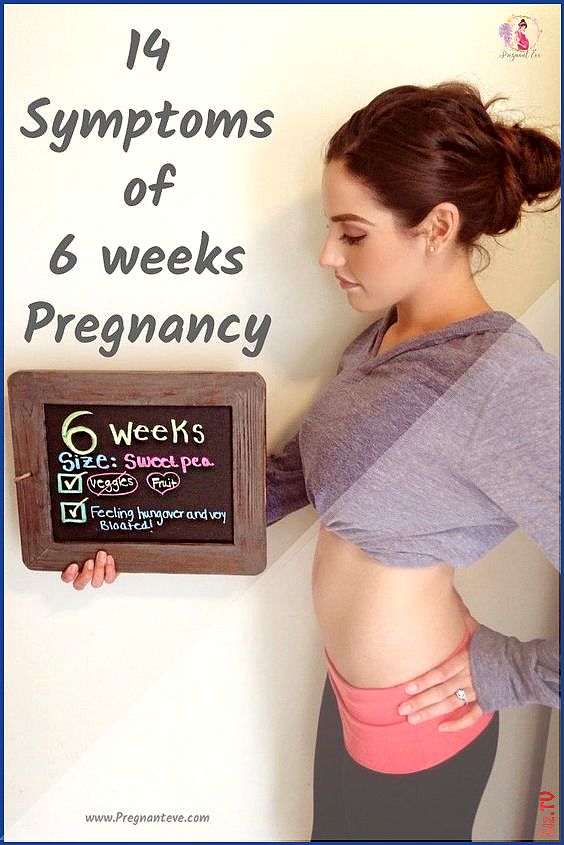
26 Weeks Pregnant
You haven’t met baby yet, but they’re taking over your life! They’re interfering with your sleep, messing with your memory and even giving you a stress headache or two at 26 weeks pregnant. (They’ll do all those things after birth too!) When they say moms-to-be have 40 weeks to get ready for baby, they don’t just mean growing the baby and buying a car seat and bouncer. You also need to mentally prepare for a newborn to become the center of your attention. And already, at week 26 of pregnancy, baby is giving you some practice in that department.
27 Weeks Pregnant
Raise your sparkling water glass and say goodbye to the second trimester! Next week you’ll officially enter your third trimester.
ADVERTISEMENT
Pregnancy - week by week
The unborn baby spends around 38 weeks in the womb, but the average length of pregnancy (gestation) is counted as 40 weeks. This is because pregnancy is counted from the first day of the woman’s last period, not the date of conception, which generally occurs 2 weeks later.
Pregnancy is divided into three trimesters:
- First trimester – conception to 12 weeks
- Second trimester – 12 to 24 weeks
- Third trimester – 24 to 40 weeks.
Conception
The moment of conception is when the woman’s ovum (egg) is fertilised by the man’s sperm. The gender and inherited characteristics are decided in that instant.
Week 1
This first week is actually your menstrual period. Because your expected birth date (EDD or EDB) is calculated from the first day of your last period, this week counts as part of your 40-week pregnancy, even though your baby hasn’t been conceived yet.
Week 2
Fertilisation of your egg by the sperm will take place near the end of this week.
Week 3
Thirty hours after conception, the cell splits into two. Three days later, the cell (zygote) has divided into 16 cells. After two more days, the zygote has migrated from the fallopian tube to the uterus (womb).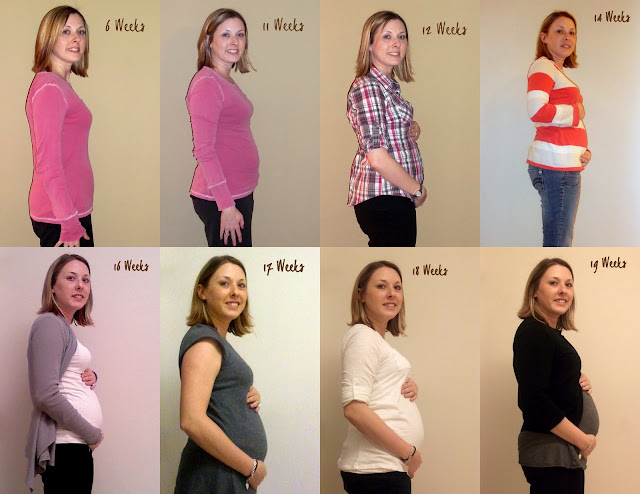 Seven days after conception, the zygote burrows itself into the plump uterine lining (endometrium). The zygote is now known as a blastocyst.
Seven days after conception, the zygote burrows itself into the plump uterine lining (endometrium). The zygote is now known as a blastocyst.
Week 4
The developing baby is tinier than a grain of rice. The rapidly dividing cells are in the process of forming the various body systems, including the digestive system.
Week 5
The evolving neural tube will eventually become the central nervous system (brain and spinal cord).
Week 6
The baby is now known as an embryo. It is around 3 mm in length. By this stage, it is secreting special hormones that prevent the mother from having a menstrual period.
Week 7
The heart is beating. The embryo has developed its placenta and amniotic sac. The placenta is burrowing into the uterine wall to access oxygen and nutrients from the mother’s bloodstream.
Week 8
The embryo is now around 1.3 cm in length. The rapidly growing spinal cord looks like a tail. The head is disproportionately large.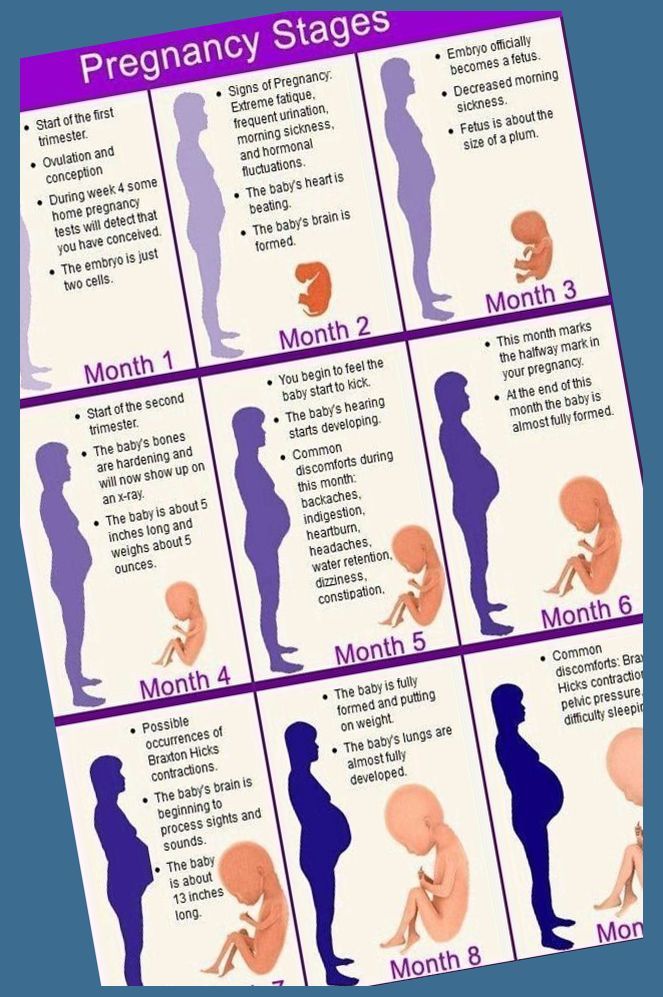
Week 9
The eyes, mouth and tongue are forming. The tiny muscles allow the embryo to start moving about. Blood cells are being made by the embryo’s liver.
Week 10
The embryo is now known as a fetus and is about 2.5 cm in length. All of the bodily organs are formed. The hands and feet, which previously looked like nubs or paddles, are now evolving fingers and toes. The brain is active and has brain waves.
Week 11
Teeth are budding inside the gums. The tiny heart is developing further.
Week 12
The fingers and toes are recognisable, but still stuck together with webs of skin. The first trimester combined screening test (maternal blood test + ultrasound of baby) can be done around this time. This test checks for trisomy 18 (Edward syndrome) and trisomy 21 (Down syndrome).
Week 13
The fetus can swim about quite vigorously. It is now more than 7 cm in length.
Week 14
The eyelids are fused over the fully developed eyes. The baby can now mutely cry, since it has vocal cords. It may even start sucking its thumb. The fingers and toes are growing nails.
The baby can now mutely cry, since it has vocal cords. It may even start sucking its thumb. The fingers and toes are growing nails.
Week 16
The fetus is around 14 cm in length. Eyelashes and eyebrows have appeared, and the tongue has taste buds. The second trimester maternal serum screening will be offered at this time if the first trimester test was not done (see week 12).
Week 18-20
An ultrasound will be offered. This fetal morphology scan is to check for structural abnormalities, position of placenta and multiple pregnancies. Interestingly, hiccoughs in the fetus can often be observed.
Week 20
The fetus is around 21 cm in length. The ears are fully functioning and can hear muffled sounds from the outside world. The fingertips have prints. The genitals can now be distinguished with an ultrasound scan.
Week 24
The fetus is around 33 cm in length. The fused eyelids now separate into upper and lower lids, enabling the baby to open and shut its eyes.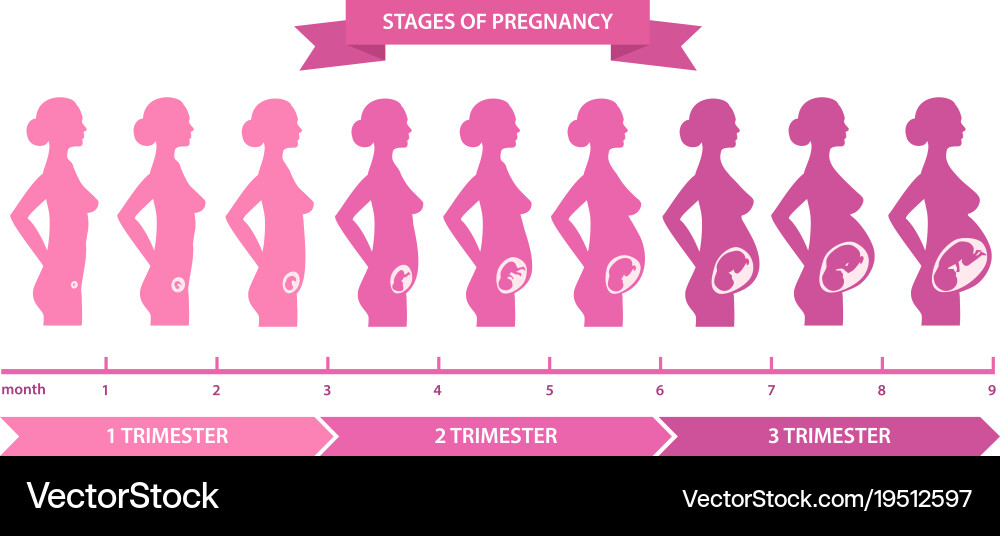 The skin is covered in fine hair (lanugo) and protected by a layer of waxy secretion (vernix). The baby makes breathing movements with its lungs.
The skin is covered in fine hair (lanugo) and protected by a layer of waxy secretion (vernix). The baby makes breathing movements with its lungs.
Week 28
Your baby now weighs about 1 kg (1,000 g) or 2 lb 2oz (2 pounds, 2 ounces) and measures about 25 cm (10 inches) from crown to rump. The crown-to-toe length is around 37 cm. The growing body has caught up with the large head and the baby now seems more in proportion.
Week 32
The baby spends most of its time asleep. Its movements are strong and coordinated. It has probably assumed the ‘head down’ position by now, in preparation for birth.
Week 36
The baby is around 46 cm in length. It has probably nestled its head into its mother’s pelvis, ready for birth. If it is born now, its chances for survival are excellent. Development of the lungs is rapid over the next few weeks.
Week 40
The baby is around 51 cm in length and ready to be born. It is unknown exactly what causes the onset of labour.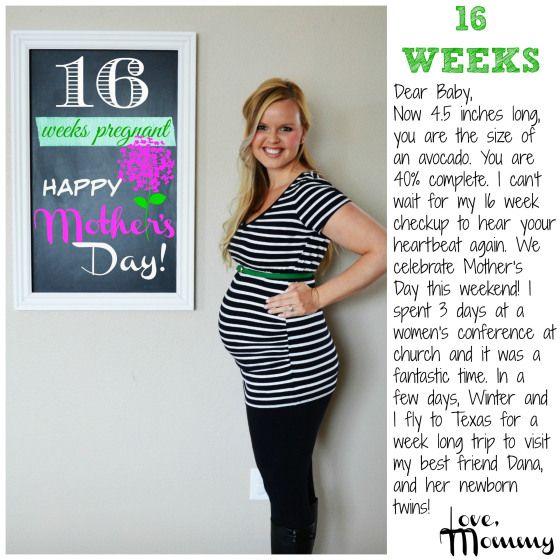 It is most likely a combination of physical, hormonal and emotional factors between the mother and baby.
It is most likely a combination of physical, hormonal and emotional factors between the mother and baby.
Where to get help
- Your GP (doctor)
- Obstetrician
- Midwife
- Your maternal and child health nurse
5-8 weeks of pregnancy
The fifth week for a baby
The fifth week of embryo development is significant for the separation of the body of the unborn child and extra-embryonic auxiliary structures - the yolk sac, amniotic bladder, chorion. The process of active formation of organs and tissues continues. At this time, the birth of all the main systems of the future organism is taking place.
At the fifth week, the size of the embryo is 1.2-1.5 mm. It is possible to see the anterior pole - the place of the future head, as well as the posterior pole - the place of the future legs. The formation of the body occurs according to the law of symmetry - a chord is laid along, which is the axis of symmetry. It is around it that the laying of future symmetrical internal organs takes place. In the future, some of them will be formed by merging the rudiments (liver, heart), and some will remain double (lungs, kidneys, etc.). nine0005
In the future, some of them will be formed by merging the rudiments (liver, heart), and some will remain double (lungs, kidneys, etc.). nine0005
The fetus in this period is in a curved state and looks like the letter C. By the end of the fifth week, the heart begins to pulsate, which has already formed. From the middle germ layer (mesoderm) begins the formation of the pancreas, liver, lungs, thyroid gland, trachea and larynx.
On the fifth allotment, the formation of the central nervous system also begins. The cells, which were previously located flat, begin to roll up, i.e., the formation of the neural tube occurs. The viability of the fetus is largely dependent on the complete closure of the tube, so the fifth week is of great importance. Folic acid is able to contribute to the high-quality closure of the tube. Therefore, when planning a pregnancy, specialists recommend taking drugs containing this substance. Also, folic acid is needed throughout the first trimester, but its role is especially important during 5-7 weeks.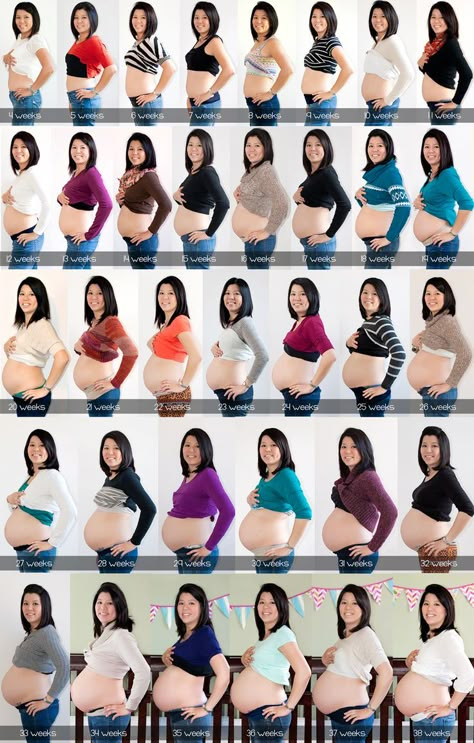 Along the tube there are bulges from which the formation of the brain sections will occur. nine0005
Along the tube there are bulges from which the formation of the brain sections will occur. nine0005
The processes located along the neural tube are called somites and represent future muscles.
Also, the fifth week is characterized by the beginning of the formation of germ cells in the embryo - this is another important moment in his life. In future people, at the stage of early development, the rudiments of eggs and spermatozoa are already laid.
Expectant mother at the fifth week
The period of five weeks is quite early, so if changes occur in the female body, they are insignificant. At this time, the cycle delay is one week, which not every woman pays attention to. If she is aware of her situation, thoughtfulness, peace, or, conversely, high activity may appear. nine0005
Odor intolerance and nausea are likely from the fifth week. Most women are prone to early toxicosis, which manifests itself in the form of vomiting, which usually occurs in the morning.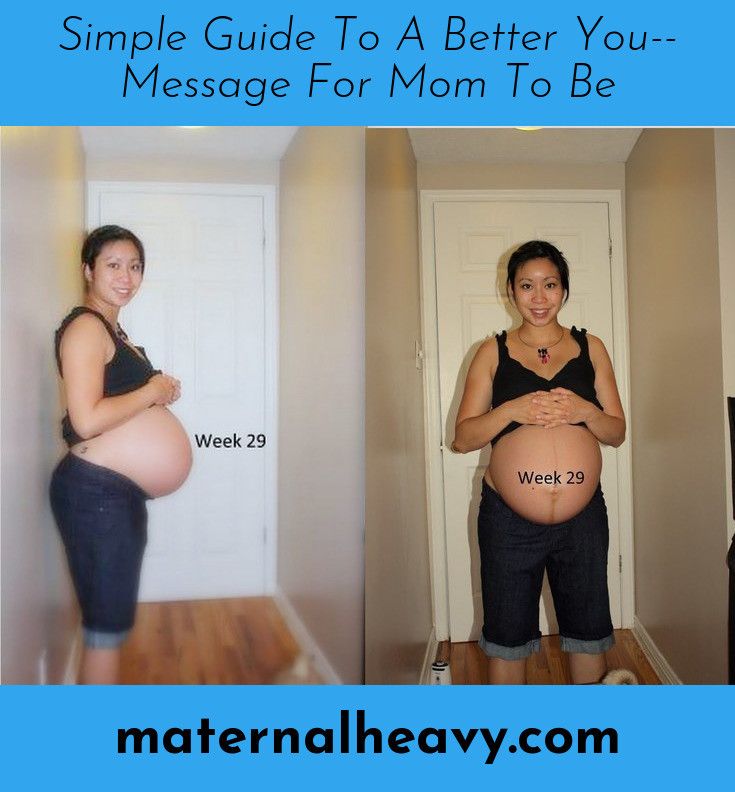 Toxicosis can be both mild and severe. The second is accompanied by incessant vomiting. Women who are faced with a severe form of toxicosis are subject to hospitalization.
Toxicosis can be both mild and severe. The second is accompanied by incessant vomiting. Women who are faced with a severe form of toxicosis are subject to hospitalization.
A feeling of heaviness in the chest or slight pain when pressed is also a sign of early pregnancy. nine0005
Sixth week for baby
During the sixth week, the embryo grows from approximately 3 mm to 6-7 mm. At this time, the shape of the embryo is cylindrical and resembles to a certain extent the embryo of a fish. The rudiments of arms and legs appear along the body, which in the sixth week have the form of processes. The arms are formed faster than the lower extremities; by the end of the sixth week, the rudiments of the hands are formed. The legs are not yet formed at the moment and remain in the rudimentary stage. At this time, the tube must completely close, and the rudiments of the hemispheres are formed from the brain bubbles. nine0005
The heart at this stage is characterized by intensive development and active pulsation.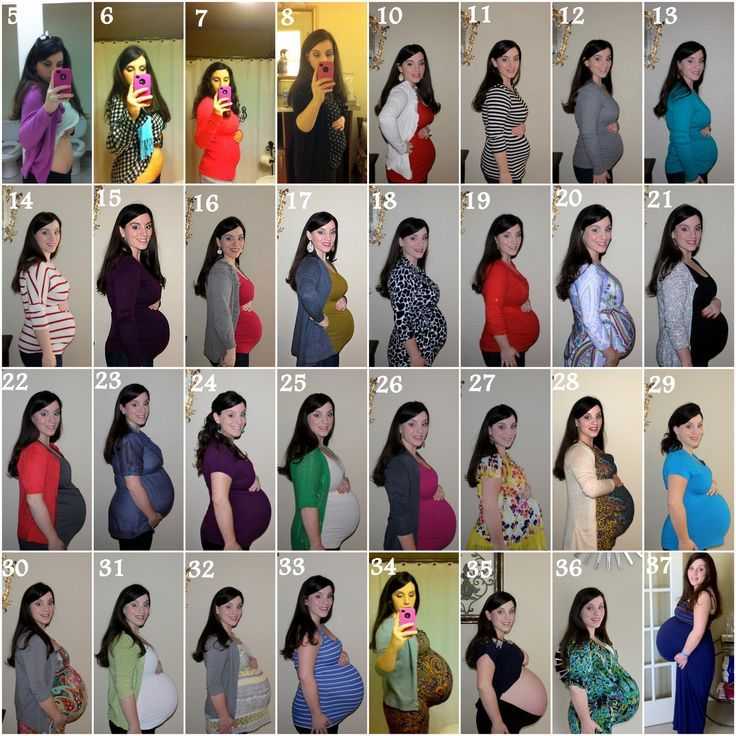 Inside this organ, division into chambers and compartments occurs, ventricles and atria appear. If you use highly sensitive ultrasound equipment, the heartbeat of the fetus can already be caught. 100-160 beats per minute at this stage makes the heart.
Inside this organ, division into chambers and compartments occurs, ventricles and atria appear. If you use highly sensitive ultrasound equipment, the heartbeat of the fetus can already be caught. 100-160 beats per minute at this stage makes the heart.
Also on the sixth week, the digestive tube is formed, which ends with the formation of the large and small intestines, stomach. nine0005
The sex glands continue to develop, the ureters are formed. An important process at this stage is the formation of chorionic villi, i.e., the laying of the future placenta. The sixth week is marked by the active stage of vascular growth and the "training" of the placenta. Of course, as a separate organ, the placenta has not yet formed and does not fulfill its functions, but the first trial steps are already being taken - there is an exchange of blood between the mother and the embryo, such an exchange is the precursor of future blood circulation. nine0005
The sixth week for the expectant mother
If the cycle is delayed by two weeks, which corresponds to the sixth obstetric week, the manifestations of toxicosis may increase in a woman.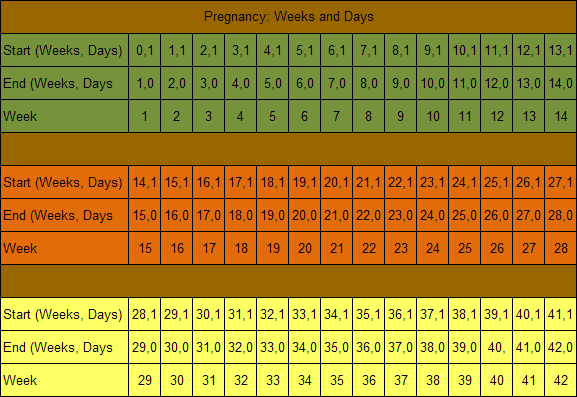 Nausea often leads to vomiting. If this happens more than two or three times a day, you should contact a specialist. In the chest, vascular permeability changes due to changes in the hormonal background. Therefore, a periodic sensation of tingling may join the feeling of fullness of the glands.
Nausea often leads to vomiting. If this happens more than two or three times a day, you should contact a specialist. In the chest, vascular permeability changes due to changes in the hormonal background. Therefore, a periodic sensation of tingling may join the feeling of fullness of the glands.
A woman in the sixth week is often accompanied by irritability, drowsiness, fatigue and weakness. All of these symptoms are the result of the influence of the hormonal background, which tries to create the best conditions for the development of the child. Experts note that the severity of the course of toxicosis directly depends on the emotional state of the woman. Therefore, the expectant mother should limit physical activity, avoid stressful situations, provide positive emotions and good mood. nine0005
Women may develop new taste preferences. Undoubtedly, it is necessary to ensure the comfort of the expectant mother, but one should not forget about common sense when choosing a diet. Even if it attracts to harmful products, they should not be consumed, of course, smoking and alcohol are contraindicated. It is undesirable to use smoked meats and any products containing chemical elements. The more correct the diet, the more benefits it can bring to the unborn baby.
Even if it attracts to harmful products, they should not be consumed, of course, smoking and alcohol are contraindicated. It is undesirable to use smoked meats and any products containing chemical elements. The more correct the diet, the more benefits it can bring to the unborn baby.
Special attention should be paid to the water balance. Dehydration can only aggravate toxicosis, so it is important to monitor the amount of fluid consumed. Sometimes fruits, water and juices even become the only possible food for a woman. nine0005
Seventh week for a baby
At this age, the embryo reaches a length of 8-11 mm, its weight at the seventh week is less than a gram. The head is equal in size to half the body, while the shape of the body is arched. You can see in the lower part of the pelvic end a continuation of the coccyx, which outwardly resembles a tail.
On the seventh week, the formation of the embryo occurs quite intensively. On the hands, you can already see the interdigital spaces, but there is no division into separate fingers yet.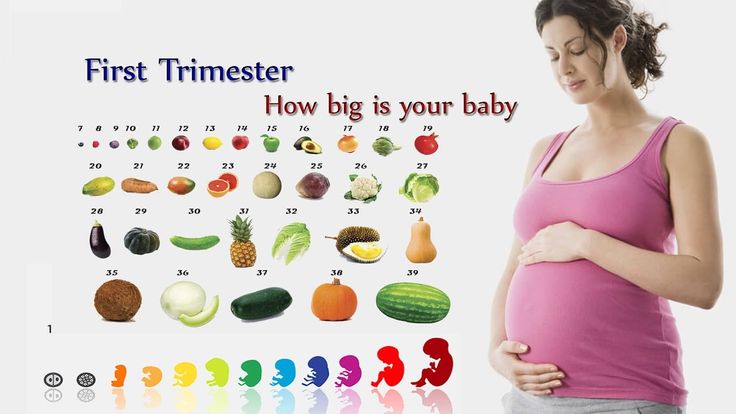 The embryo begins to develop a face, on which a nasal fossa appears. In this place, a nose is formed a little later. Also in the seventh week, the initial development of the auricles occurs. They begin to form from two elevations on the head, both jaws are formed. nine0005
The embryo begins to develop a face, on which a nasal fossa appears. In this place, a nose is formed a little later. Also in the seventh week, the initial development of the auricles occurs. They begin to form from two elevations on the head, both jaws are formed. nine0005
The seventh week is characterized by such an important event as the formation of the circulatory system of the female body and the fetus, as well as the umbilical cord. There is uteroplacental blood flow. From now on, tissue respiration and nutrition of the fetus occur through maternal blood. The unborn child falls under the protection of the mother's body. The future placenta (chorion) not only nourishes the embryo, but also acts as a protective filter, preventing harmful microorganisms and toxins that can significantly harm the fetus. nine0005
The seventh week for the future mother
From the seventh week, the growth of the uterus begins in a woman, this can be determined by a specialist during a gynecological examination. At this stage, many expectant mothers have an increase in the abdomen, which is one of the main signs of pregnancy. The growth of the uterus and the size of the embryo cannot cause an increase in the abdomen. This is due to the action of progesterone, which leads to lethargy of the intestinal loops, as well as a decrease in the tone of the anterior abdominal wall. Bloating occurs, which is the cause of visible changes in the abdomen. nine0005
At this stage, many expectant mothers have an increase in the abdomen, which is one of the main signs of pregnancy. The growth of the uterus and the size of the embryo cannot cause an increase in the abdomen. This is due to the action of progesterone, which leads to lethargy of the intestinal loops, as well as a decrease in the tone of the anterior abdominal wall. Bloating occurs, which is the cause of visible changes in the abdomen. nine0005
Increased urination is a consequence of the fact that the total volume of blood in the female body increases. Such a change will accompany the expectant mother throughout the pregnancy and will especially manifest itself in the last trimester. If pain occurs during urination, then there is a reason for a visit to the doctor, since this is not considered the norm. Changes in bowel function are possible, constipation and diarrhea can occur with equal probability. The reasons may be a change in the usual diet or hormonal levels. Since regular daily stools ensure the timely removal of toxins from the body of the expectant mother, it must be carefully monitored. If you have problems with bowel movements, you should consult a specialist. nine0005
If you have problems with bowel movements, you should consult a specialist. nine0005
Eighth week for baby
The embryo is 15-20 mm long by the beginning of the eighth week and 40 mm by the end of it. The mass of the embryo is five grams. After the eighth week, the embryonic period ends and the fetal period begins. After eight weeks, experts no longer use the term embryo, the unborn child is called the fetus until it is born. The main features of the eighth week are the intensive development and modification of the embryo. There is a straightening of the body, and it is increasingly divided into segments - limbs, head and torso. nine0005
At this stage, the nervous system is actively developing. Also on the eighth week, the brain is divided into sections, the hemispheres are more clearly outlined, convolutions are formed.
The face of the unborn child becomes more prominent, ears, nostrils, eyes are formed. By the end of the eighth week, the upper lip is fully connected, and the face looks quite distinctly formed.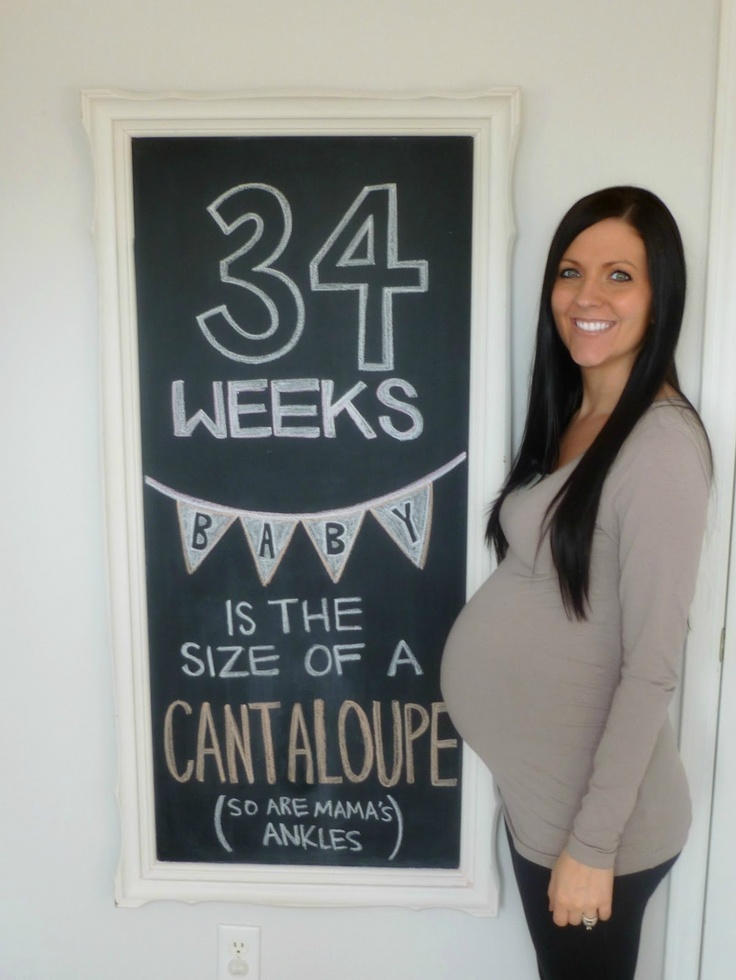
The process of ossification of the skull, arms and legs belongs to the features of this period. Bones harden. The formation of the fingers occurs, and the large one becomes isolated and opposed to the palm. Large joints (elbows and knees) are formed. nine0005
Brain structures, which are responsible for muscle tone, and the muscular system itself are also being actively formed. This allows the embryo to perform a variety of movements. The development of the digestive tract is almost completed by the end of this week. The intestines and stomach are supplied with nerve endings, which in the future will be able to provide motor functions of the gastrointestinal tract, the cavities of the kidneys, heart, bladder and ureters are formed.
The vascular system develops in the future placenta. The chorionic villi penetrate deeply into the wall of the uterus. Utero-placental circulation becomes full. The complex supply of the growing fetus is provided by the vessels of the umbilical cord, through which it receives blood enriched with oxygen and a variety of nutrients.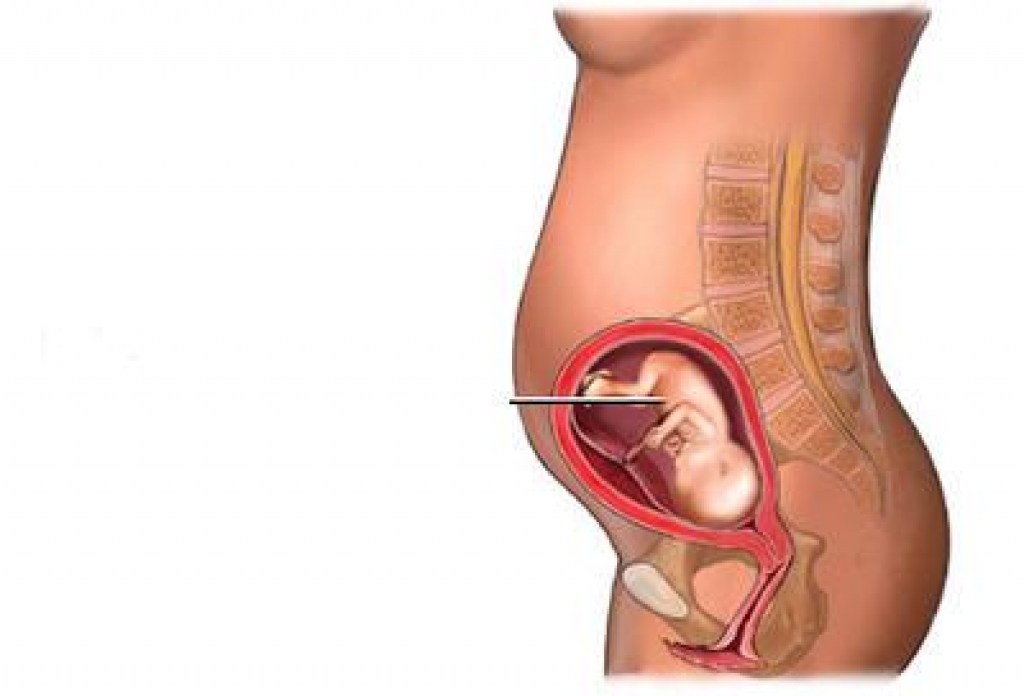 Also, through these vessels, metabolic products and carbon dioxide are removed. nine0005
Also, through these vessels, metabolic products and carbon dioxide are removed. nine0005
The eighth week for the expectant mother
The eighth week does not bring significant changes to the woman's body. All manifestations of toxicosis do not change their character, but are already much easier to bear. This is due to the fact that by this time pregnant women get used to their condition and find factors that facilitate it and create comfort. These can be certain foods, good sleep, one or another diet, walks, etc.
In this material, the gestational age is indicated as obstetric, that is, it is calculated from the first day of the preceding pregnancy menstruation. nine0005
1-4 weeks of pregnancy
From a tiny fetus to a small person, a child's body develops in just 9 months. What changes are happening to the expectant mother and what changes are observed inside her during this difficult and joyful period of life?
Each new life begins with the union of the egg and sperm.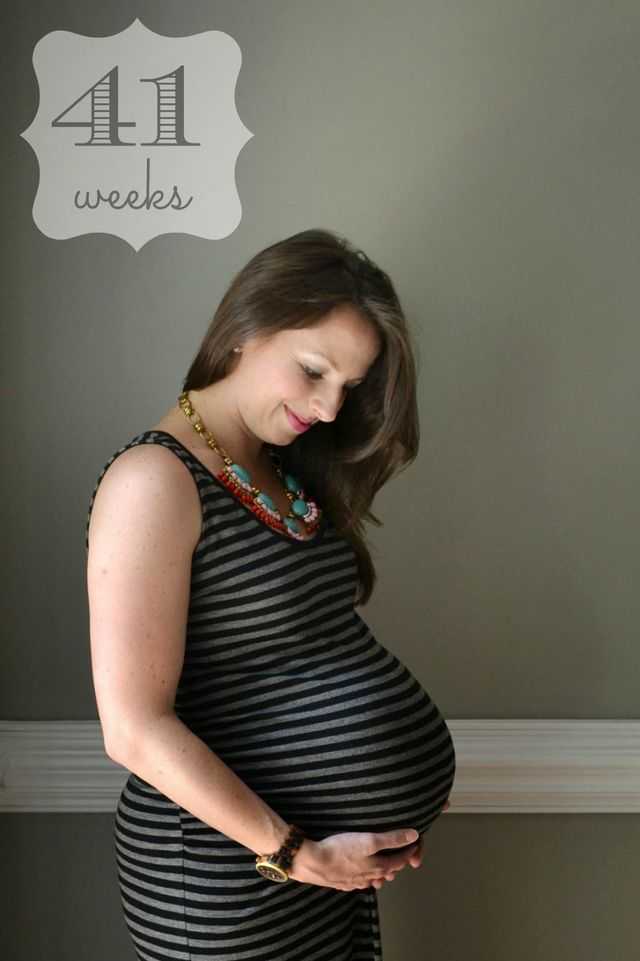 Conception is the process by which a sperm enters an egg and fertilizes it.
Conception is the process by which a sperm enters an egg and fertilizes it.
It should be noted that the embryonic and obstetric terms are different. The thing is that among specialists it is customary to consider the period from the first day of the last menstruation, that is, the obstetric period includes the period of preparation for pregnancy. So it turns out that the embryo has just appeared, and the gestation period is already two weeks. It is the obstetric period that is indicated in all the documents of a woman and is the only reporting period for specialists. nine0005
Until the moment of the meeting, the spermatozoon and the ovum lived for a certain time, being in the stage of development and maturation. The development of the future fetus significantly depends on the quality of these processes.
First week
Growth and maturation of the egg starts from the first day of the cycle. A mature egg contains 23 chromosomes as the genetic material for the future embryo, and also contains all the nutrients necessary to start its development. It contains reserves of carbohydrates, proteins and fats, designed to support the embryo during the first days after its occurrence. nine0005
It contains reserves of carbohydrates, proteins and fats, designed to support the embryo during the first days after its occurrence. nine0005
A certain number of eggs are laid in each ovary of a girl before she is born. During the childbearing period, they only grow and develop, the process of their formation does not occur. By the time a girl is born, the number of cells from which eggs can develop in the future reaches a million, but this number decreases significantly over the course of life. So, by the time of puberty, there are several hundred thousand of them, and by maturity - about 500.
The ovary each month gives the opportunity to develop most often one egg, the maturation of which occurs inside a vesicle with a liquid called a follicle. From the first day of the cycle, the uterine mucosa begins to prepare for a possible pregnancy. For implantation, i.e., the introduction of the resulting embryo into the wall of the uterus, an optimal environment is created. To do this, due to the influence of hormones, the endometrium thickens, it becomes covered with a network of vessels and accumulates the nutrients necessary for the future embryo. nine0005
nine0005
Male reproductive cells are formed in the gonads - in the testicles or testes. The maturation of spermatozoa occurs in the epididymis, into which they move after formation. The liquid structure of semen is formed due to the secretion of the seminal vesicles and the prostate gland. A liquid medium is necessary for storing mature spermatozoa and creating favorable conditions for their life.
The number of spermatozoa is quite large: tens of millions in one milliliter. Despite such a significant number, only one of them will be able to fertilize the egg. In spermatozoa, there is exclusively genetic material - 23 chromosomes, which are necessary for the appearance of the embryo. nine0005
Spermatozoa are characterized by high motility. Once in the female genital tract, they begin their movement towards the egg. Only half an hour or an hour passes from the moment of ejaculation, when sperm enter the uterine cavity. It takes one and a half to two hours for spermatozoa to penetrate into the widest part, which is called the ampulla.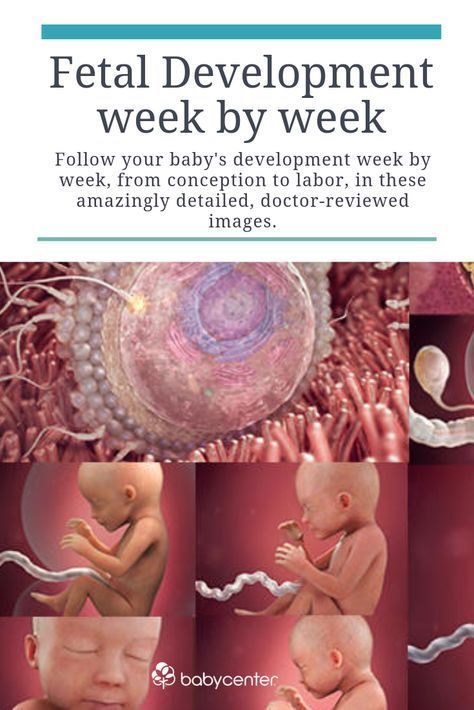 Most spermatozoa die on the way to the egg, meeting the folds of the endometrium, getting into the vaginal environment, cervical mucus.
Most spermatozoa die on the way to the egg, meeting the folds of the endometrium, getting into the vaginal environment, cervical mucus.
Second week
In the middle of the cycle, the egg fully matures and leaves the ovary. It enters the abdominal cavity. This process is called ovulation. With a regular cycle of 30 days, ovulation occurs on the fifteenth. The egg is unable to move on its own. When she leaves the follicle, the fimbriae of the fallopian tube ensure her penetration inside. The fallopian tubes are characterized by longitudinal folding, they are filled with mucus. The muscular movements of the tubes have a wave-like character, which, with a significant number of cilia, creates optimal conditions for transporting the egg. nine0005
Through the tubes, the egg enters the widest part of them, which is called the ampulla. This is where fertilization takes place. If there is no meeting with the sperm, the egg dies, and the female body receives the appropriate signal to start a new cycle.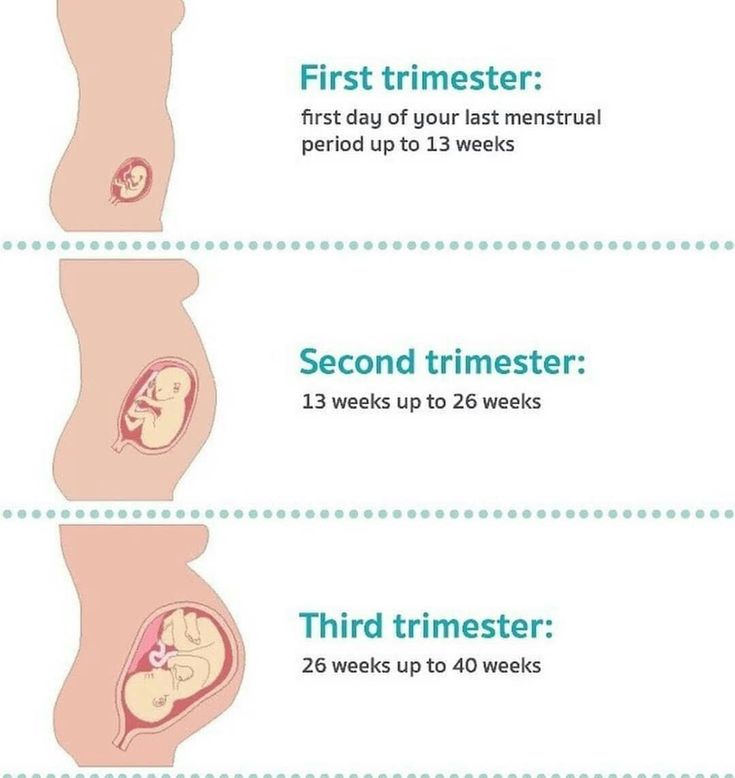 There is a rejection of the mucous membrane, which was created by the uterus. The manifestation of such rejection is bloody discharge, which is called menstruation.
There is a rejection of the mucous membrane, which was created by the uterus. The manifestation of such rejection is bloody discharge, which is called menstruation.
The waiting time for fertilization by the egg is short. On average, it takes no more than a day. Fertilization is likely on the day of ovulation and maximum on the next. Sperm have a longer lifespan, averaging three to five days, in some cases seven. Accordingly, if a spermatozoon enters the female genital tract before ovulation, there is a possibility that it will be able to wait for the appearance of an egg. nine0005
When an egg is in a state of waiting for fertilization, certain substances are released that are designed to detect it. If spermatozoa find an egg, they begin to secrete special enzymes that can loosen its shell. As soon as one of the spermatozoa penetrates the egg, the others can no longer do this due to the restoration of the density of its shell. Thus, one egg can only be fertilized by one sperm. nine0005
nine0005
After fertilization, the chromosome sets of the parents merge - 23 chromosomes from each. As a result, one cell is formed from two different cells, which is called a zygote. The sex of the unborn child depends on which of the chromosomes, X or Y, was in the sperm. Eggs contain only X chromosomes. When XX is combined, girls are born. If the spermatozoon contains a Y chromosome, that is, with a combination of XY, boys are born. As soon as a zygote is formed in the body, a mechanism is launched in it aimed at maintaining pregnancy. There are changes in the hormonal background, biochemical reactions, immune mechanisms, and the receipt of nerve signals. The female body creates all the necessary conditions for the safe development of the fetus. nine0005
Third week
As soon as a day has passed after the formation of the embryo, he will need to make his first journey. The movements of the cilia and the contraction of the muscles of the tube direct it into the uterine cavity.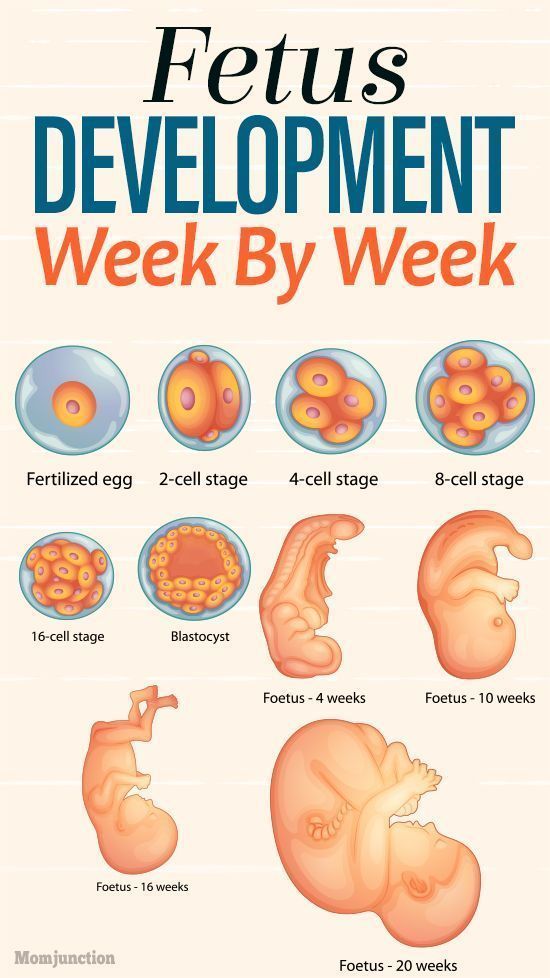 During this process, inside the egg, fragmentation into identical cells occurs.
During this process, inside the egg, fragmentation into identical cells occurs.
After four days, the appearance of the egg changes: it loses its round shape and becomes vine-shaped. This stage is called morula, embryogenesis begins - an important stage in the development of the embryo, during which the formation of the rudiments of organs and tissues occurs. Cleavage of cells continues for several days, on the fifth day their complexes are formed, which have different functions. The central cluster forms directly the embryo, the outer one, called the trophoblast, is designed to melt the endometrium - the inner layer of the uterus. nine0005
It takes 5-7 days for the embryo to reach the uterus. When implantation occurs in its mucous membrane, the number of cells reaches one hundred. The term implantation refers to the process of implantation of the embryo into the endometrial layer.
After fertilization, implantation occurs on the seventh or eighth day. The first critical period of pregnancy is this stage, since the embryo will have to demonstrate its viability for the first time.
During implantation, the outer cells of the embryo actively divide, and the process itself takes about forty hours. The number of cells outside the embryo increases dramatically, they stretch, they penetrate into the uterine mucosa, and the thinnest blood vessels are formed inside, which are necessary for the supply of nutrients to the embryo. Time will pass, and these vessels will be transformed first into the chorion, and subsequently into the placenta, which will be able to supply the fetus with everything necessary until the baby is born. nine0005
The embryo at this stage of life is called a blastocyst. It contacts with the endometrium, melts the cells of the endometrium with its activity, creates a path for itself to the deeper layers. The blood vessels of the embryo intertwine with the mother's body, which allows it to immediately begin to extract useful and necessary substances for development. This is vital, because by this time the stock that the mature egg carried in itself is exhausted.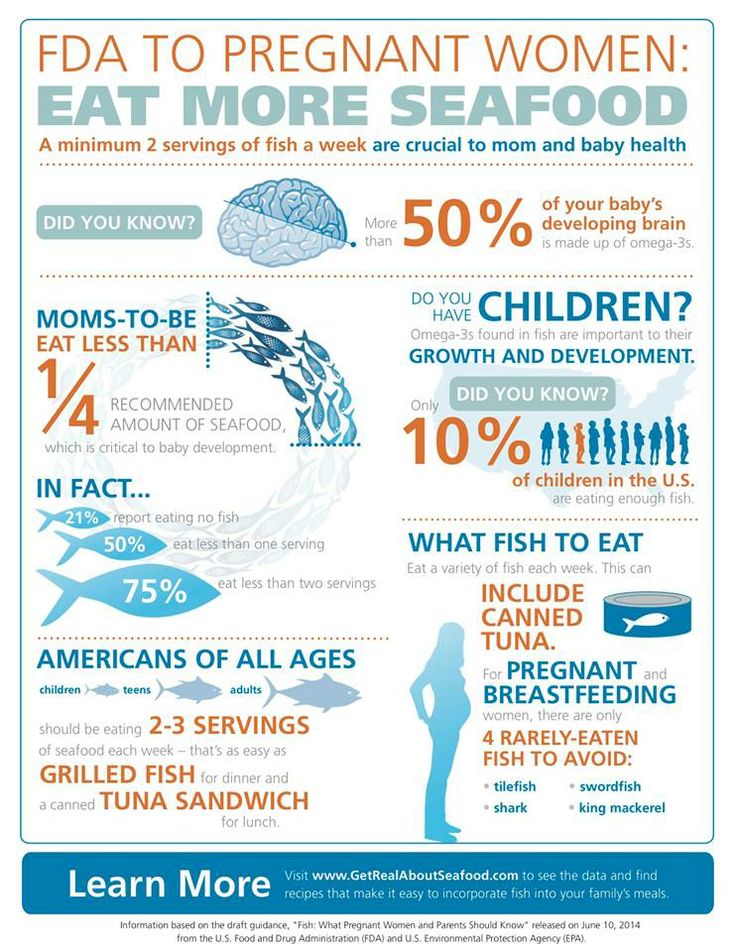
Next, the production of the trophoblast cells, i.e., the outer cells of human chorionic gonadotropin, the hCG hormone, begins. The distribution of this hormone throughout the body notifies it of the onset of pregnancy, which causes the launch of active hormonal changes and the beginning of corresponding changes in the body. nine0005
After fertilization and before the start of hCG, it usually takes eight or nine days. Therefore, already from the tenth day after fertilization, it becomes possible to determine this hormone in the mother's blood. Such an analysis is the most reliable confirmation of the onset of pregnancy. The tests that are offered today to determine pregnancy are based on the detection of this hormone in the urine of a woman. After the first day of delayed menstruation with its regular cycle, it is already possible to determine pregnancy using a test on your own. nine0005
What happens to a woman in the third week of pregnancy
If a woman is planning a pregnancy, 21-24 days, subject to a regular cycle, should become important for her.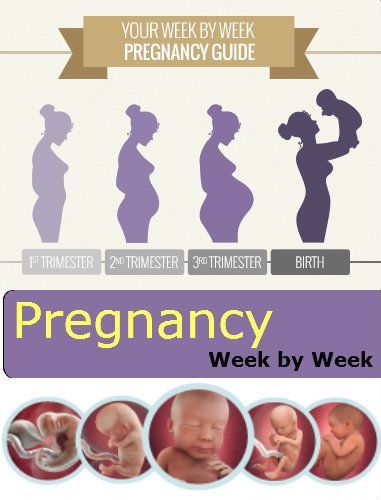 This is a period of possible implantation, when you should pay special attention to your own lifestyle. During this period, thermal effects and excessive physical exertion are undesirable, and the influence of various kinds of radiation should also be prevented.
This is a period of possible implantation, when you should pay special attention to your own lifestyle. During this period, thermal effects and excessive physical exertion are undesirable, and the influence of various kinds of radiation should also be prevented.
The woman does not feel anything at this stage, because implantation has no external signs. If you adjust your lifestyle in accordance with the simple rules listed above, you will be able to create optimal conditions for successful implantation. nine0005
Fourth week
At the fourth obstetric week or the second week of the fetus's life, its body consists of two layers. Endoblast - cells of the inner layer - will become the beginning of the digestive and respiratory systems, ectoblast - cells of the outer layer - will start the development of the nervous system and skin.
The size of the embryo at this stage is 1.5 mm. The flat arrangement of the cells determined the name of the embryo of this age - the disc.